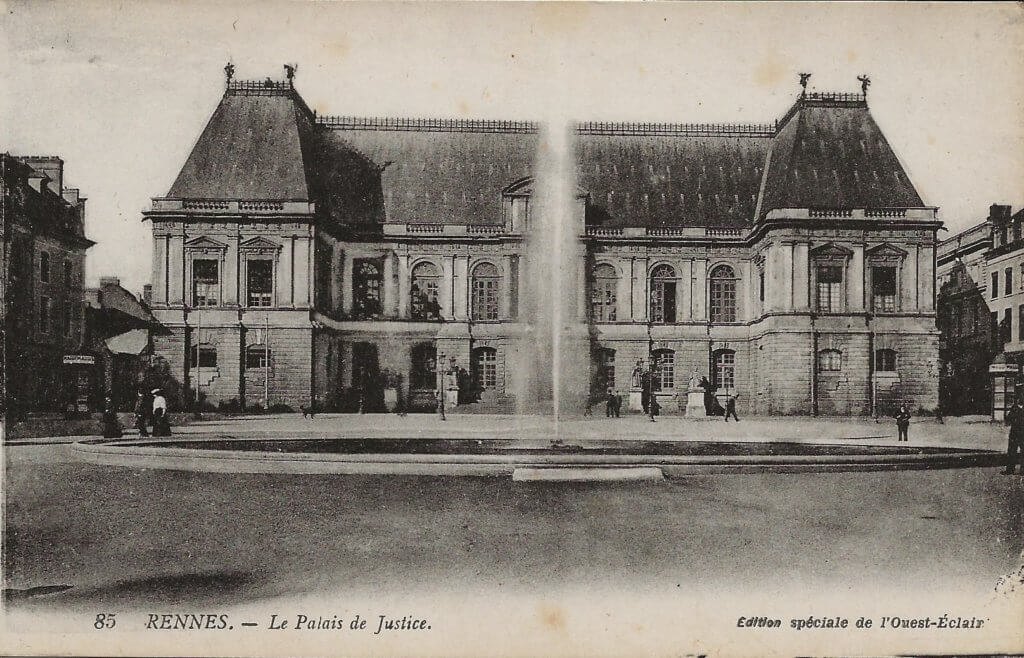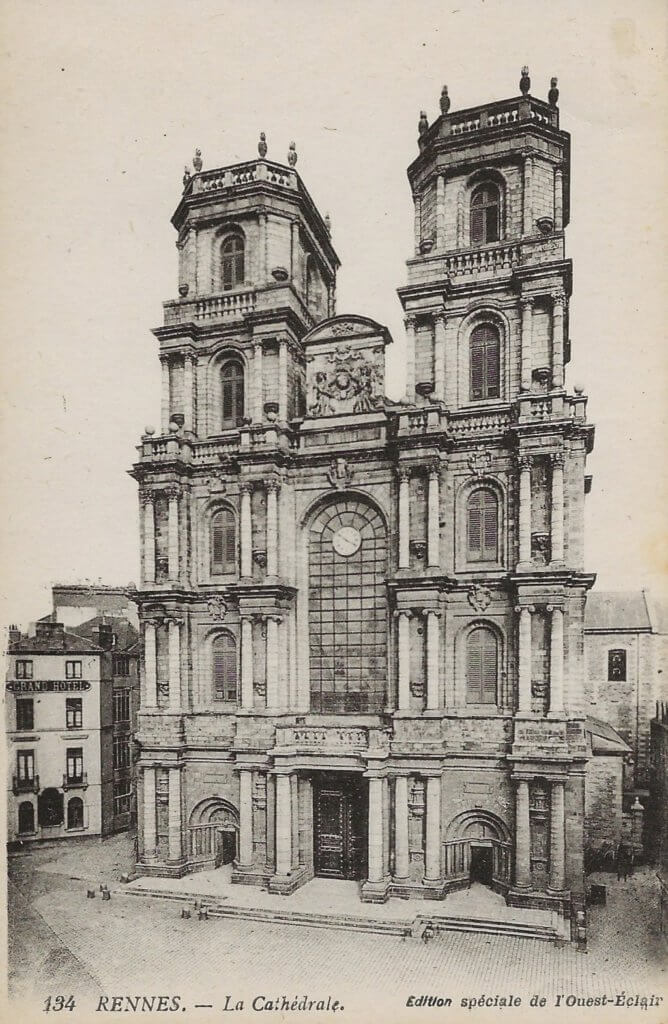St. Malo France, Jan 27, 1919 [part 1]
Posted by Joel C. Swisher on January 26, '19
-

Dear Folks,After nearly 14½ months I was fortunate to draw a 7 day furlough which we are entitled to once every 4 months. This is the Brittany Leave Area for the A.E.F. It consists of four small towns St. Malo, Parame, Dinard, and St. Servain. The total population of the four towns is about 35 thousand and they are located a few miles from each other on different points of a small bay. In the days before the war it was quite a summer resort for French, English and American rich. The town itself dates back to 1600 & 1700, the walls and towers to 1200 and 1400, some parts even to the time of the Romans, but its use as a resort was started by Henessey, the man who founded a brand of whiskey known as Three Star Henessy. Harry Thaw spent quite a bit of his time here. There are a large number of first class hotels, beaches, and casinos, the latter were formerly used as gambling places and dance halls but are now occupied by the Y.M.C.A. The government pays our board and lodging at any of the first class hotels. We have a little over 7 days here and whatever time is necessary for our going and coming. Our time on the road is limited to a large extent by the money we have to spend or want to spend along the road. If we stop over night at any town along the road, that is at our own expense.
On the way here I stopped for a night and a day at the city of Rennes. A town of a 100,000 or more. It is the most up to date French city I have been in yet. Fine big buildings, in some cases beautiful and wide, clean streets and an up to date street car service.
The four most noteworthy buildings there are The Palace of Justice (which we would call the court house but which really deserves the name of Palace), the cathedral, City Hall, and the museum. I went thru the Palace of Justice but found the doors to all the rooms locked. As I was going down the steps of the building coming out a man stepped up to me and said in English, “Have you been thru the Palace of Justice?” I was somewhat surprised to be addressed in English, and told him I had been thru but could see nothing. He then offered to take me thru. He said to me “You boys have done so much to free my country that I do this every day for any American soldiers I meet in this town. I am the Belgium Councillor.” I didn’t know what a Belgian Councillor was but was glad of the opportunity of seeing the place by one who understood things and could explain them in English. First he took me thru this Palace of Justice, which is truly the most beautiful and most wonderful building of its kind on the inside that I ever saw. He told me and I believe him it has scarcely an equal in the world. It was built in 1640 and has not been touched since and its inside furnishings are as new as if done last year. The ceilings and walls are hand carved and gold gilt. There are cloaks of the kings of France, one painting Rockefeller offerred $250,000 for. Boxes where the kings and queens of Brittany sat during the court sessions in 1600 and on. There several hand woven tapestries, four of which are valued at $500,000 and two are valued at one million.

From here he took me to the cathedral. By this time we had several other soldiers in our party. The cathedral is noted particularly for its marble columns. On its interior it has 55 marble columns each 36 ft high, weighing 10 tons and is one piece of solid marble.Then we went to dinner. He took us to a little restaurant where for 4½ francs (a very low price) we had one of the best dinners I have eaten at a restaurant in France. Furthermore I can say I had the privilege, pleasure and honor of dining with Francois Letist, Councillor of Belgium, whoever or whatever he is. He has been away from Belgium 4½ years, escaping to England thru Ostend shortly after the beginning of the war. He is the mayor of the town of Firlemont near Louvain and saw thousands of civilians, old men, women and children slaughtered. His father is a professor in the University of Louvain.
After dinner we went to the City Hall, thru the various rooms including the famous back room and sat in the chairs formerly owned by the Royal Family of France and recently brought from Paris to save them from the German bombardment.
From the City Hall we visited the museum, where we saw the hand carriages of the kings, Louis XIV and XVI. Also some wonderful and priceless paintings including one of Rembrandts and three large ones brought here from the Cathedral at Antwerp to save them from the Germans and which I have heard about since I read that piece entitled, “A Dog of Flanders” in our third Reader at school. They are world famous. One is the Elevation to the Cross (I regret I cannot remember the name of the artist) and “The Descent From the Cross” by Rubens. Never did I expect that in my humble life I would have the privilege of looking upon the original of these masterpieces. In the room adjoining the one containing the pictures we came upon a glass box and in it was the remains of Mark Antony. The man who made the funeral oration over Julius Caesar.
Then I bid farewell to the Councillor of Belgium and took the train for St. Malo.
[Continued in next post]